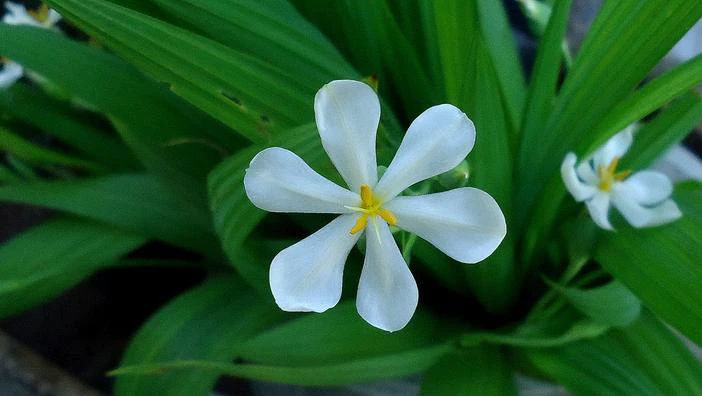Lagrimas De La Virgen
(Eleutherine bulbosa)
Lagrimas De La Virgen (Eleutherine bulbosa)
/
/

Alex Popovkin
CC BY 2.0






























Estimated Native Range
Climate Requirements for Kissimmee, Florida
| This Plant | Your Site | Plant Suitability for Your Location | ||
|---|---|---|---|---|
| • Precipitation | 53" - 64" | 48" | Aquatic | Aquatic |
| • High Temp. | 82°F - 92°F | 92°F | Your summer temperatures are normal for this plant. | Excellent |
| • Low Temp. | 46°F - 71°F | 49°F | Your winter temperatures are normal for this plant | Excellent |
Summary
Eleutherine bulbosa is valued for its medicinal properties, particularly in traditional medicine. It is cultivated for its bulb, which is used in various remedies. The plant thrives in moist, well-drained soils and prefers partial shade, although it can tolerate periods of full sun. It requires consistent moisture but is relatively low-maintenance once established. In cultivation, it is often grown in herb gardens or as part of ethnobotanical collections. While not commonly known for ornamental use, its evening-blooming flowers can add a unique element to nighttime gardens.CC BY-SA 4.0
Plant Description
- Plant Type: Bulbs
- Height: 0.5-1 feet
- Width: 0.5-1 feet
- Growth Rate: Moderate, Slow
- Flower Color: Red
- Flowering Season: Summer
- Leaf Retention: Semi-deciduous
Growth Requirements
- Sun: Full Sun
- Water: Medium
- Drainage: Medium
Common Uses
Border Plant, Edible*Disclaimer: Easyscape's listed plant edibility is for informational use. Always verify the safety and proper identification of any plant before consumption., Low Maintenance, Potted Plant
Natural Habitat
Variety of habitats in tropical Latin America, including the Amazon rainforest and other moist, forested areas
Other Names
Common Names: Onion Grass , Garlic Root , Lagrimas De La Virgen , Manjana , Nkokoloko , Fairy Lily
Scientific Names: Eleutherine bulbosa , Antholyza meriana , Bermudiana bulbosa , Bermudiana congesta , Cipura plicata , Eleutherine americana , Eleutherine americana , Eleutherine anomala , Eleutherine longifolia , Eleutherine plicata
GBIF Accepted Name: Eleutherine bulbosa